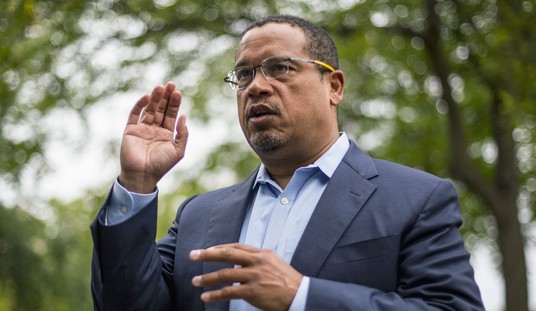Remember the booming housing market — where Americans had great opportunities to relocate and/or trade up? Those days are likely to become a fading memory, thanks to rising interest rates, and arguably have already come to a screeching halt. CNBC reported that the latest data from the National Association of Realtors (NAR) showed the worst result in two years for sales of existing homes:
Sales of existing homes in May dropped 3.4% to a seasonally adjusted annualized rate of 5.41 million units, according to the National Association of Realtors.
Sales were 8.6% lower than in May 2021. April’s sales were revised slightly lower as well.
This is the weakest reading since June 2020, which was during the early months of the Covid pandemic. Adjusting for that, it is the lowest since January 2020.
This reading is based on closings during the month, therefore representing contracts likely signed in March and April. During that time the average rate on the 30-year fixed mortgage rose from right around 4% to 5.5%. It is currently right around 6%, according to Mortgage News Daily. Rising rates, along with rapid home price appreciation and continued low supply, have given affordability a triple punch.
As the video notes, however, the inventory for existing homes has started to go up. The St. Louis Federal Reserve tracks that data from the NAR as well, and it shows inventory rebounding sharply in 2022. In fact, inventory of existing homes has increased roughly 36.5% since February:

Not coincidentally, February was when the Federal Reserve first began laying its plans for a sharp intervention against inflation. That has also had an impact on housing valuation too. Although it hasn’t exactly started a deflation, median house prices (all types) have leveled off almost entirely over the last six months:

Later this week, the NAR should release its report on new-home sales. Don’t expect good news there either, although the fall may not be as sharp as last month’s report. New-home sales fell 16.6% from March into April. The median sale prices still rose in April, but the sharp rise in interest rates will likely start having an impact on price as well. Even the more mild mortgage-rate hikes in April added hundreds of dollars to the monthly payments:
While new construction gained favor with many would-be buyers over the past two years due to the extreme shortage of existing homes for sale, the rising cost of a new home is now pricing many people out of the market. The median price of a new home jumped 20% higher compared with last year, to $450,600 pushing the monthly mortgage payment $720 higher, a 57% increase at today’s average mortgage rate.
As inventory rises in existing homes, that price pressure will also fade on new homes. Even more worrisome will be a glut that might push homebuilders into financial straits while homes sit on the market. Existing-home inventory may be up, but it’s still not reached its high over the past year. In contrast, new-home inventory is now up well over the high of the last five years:

That’s the highest inventory level in twelve years. That kind of backlog may be great for choosy buyers, especially those coming in with all-cash offers, but it’s not good for builders. It’s also not too good for lenders, either in the form of mortgages or in large-scale loans to builders who may find it difficult to stretch out their financial commitment if these houses stay in inventory for too long.
For now, CNBC continues, that’s too much of a problem, as homes overall only stay on the market for an average 16 days. That’s as good as ever, according to NAR’s stats, but the rapid increase in mortgage rates has buyers “pausing and reconsidering” even on new homes.
Prices may have to come down, Diana Olick reports, but … how? Runaway inflation makes the costs of building go up, as well as the cost of renovation and sales preparation. At some point, all of these competing factors may end up producing a stall — and with it, an end to flexibility for homeowners and builders to keep up with some pent-up demand. Imagine how much easier all of this would have been if the US had a rational energy policy that could have flexed to tamp down energy prices that have largely driven inflation over the past year. Oh well.








Join the conversation as a VIP Member